Revisited Carmichael’s Reduced Totient Function
Abstract
1. Introduction
2. Preliminaries
- If , then
- For all integer m, then
- If , then
- For , we have
- It concludes that
- –
- If then
- –
- If thenwhere
- –
- Therefore,
we can say that if and , then
3. Properties of
- If are odd primes and k is any positive integer, then
- If , where p is an odd prime, then ;
- If , then .
- If then is an even number.
- If p and q are two odd primes, and k and l are any natural numbers, then
- If and q are three odd primes, and and s are any natural numbers, then
- Let be an increasing sequence of primes, then:
- From the definition of the function , we can conclude the following:
- If are primes and k is any integer, then . Indeed,
- For all odd primes p, we have: Indeed,
- If , then .We note the followingTherefore, for any odd number m, we haveIf , we can factor more the termBy the Euler theorem, we haveBy induction, we can easily prove that for any odd integer m and for all integer the following statement is true:Thus,
- For , we have the following:
- , which is even for any odd prime p.
- , which is even for any odd prime p.
- (a)
- For some integer l, if divides , then .
- (b)
- is an even number.
(a) and (b) imply that is even.
- According to Lemma 3, we have:
- According to Lemma 3, we have:
- Obvious, it is enough to prove that .
- Obvious.
4. Computations of versus
5. Conclusions
Author Contributions
Funding
Institutional Review Board Statement
Informed Consent Statement
Acknowledgments
Conflicts of Interest
References
- Carmichael, R.D. On composite numbers p which satisfy the Fermat congruence ap−1 ≡ 1mod(p). Am. Math. Mon. 1912, 19, 22–27. [Google Scholar]
- Erdos, P.; Pomerance, C.; Schmutz, E. Carmichael’s lambda function. Acta Arith. 1991, 58, 363–385. [Google Scholar] [CrossRef]
- Padberg, F. Elementare Zahlentheorie; Spektrum Akademischer Verlag: Heidelberg/Berlin, Germany, 1996. [Google Scholar]
- Riesel, H. Prime Numbers and Computer Methods for Factorization; Birkhäuser Boston: Basel, Switzerland; Berlin, Germany, 1994. [Google Scholar]
- Contini, S.; Croot, E.; Shparlinski, I.E. Complexity of Inversing the Euler Function. Math. Comput. 2006, 75, 983–996. [Google Scholar] [CrossRef]
- Ford, K.; Hu, Y.Y. Divisors of the Euler and Carmichael functions. Acta Arith. 2007, 133. [Google Scholar] [CrossRef][Green Version]
- Ge, Y. A Note on the Carmichael Function. Available online: https://www.math.sinica.edu.tw/www/file_upload/summer/crypt2017/data/2015/[20150707][carmichael].pdf (accessed on 1 May 2021).
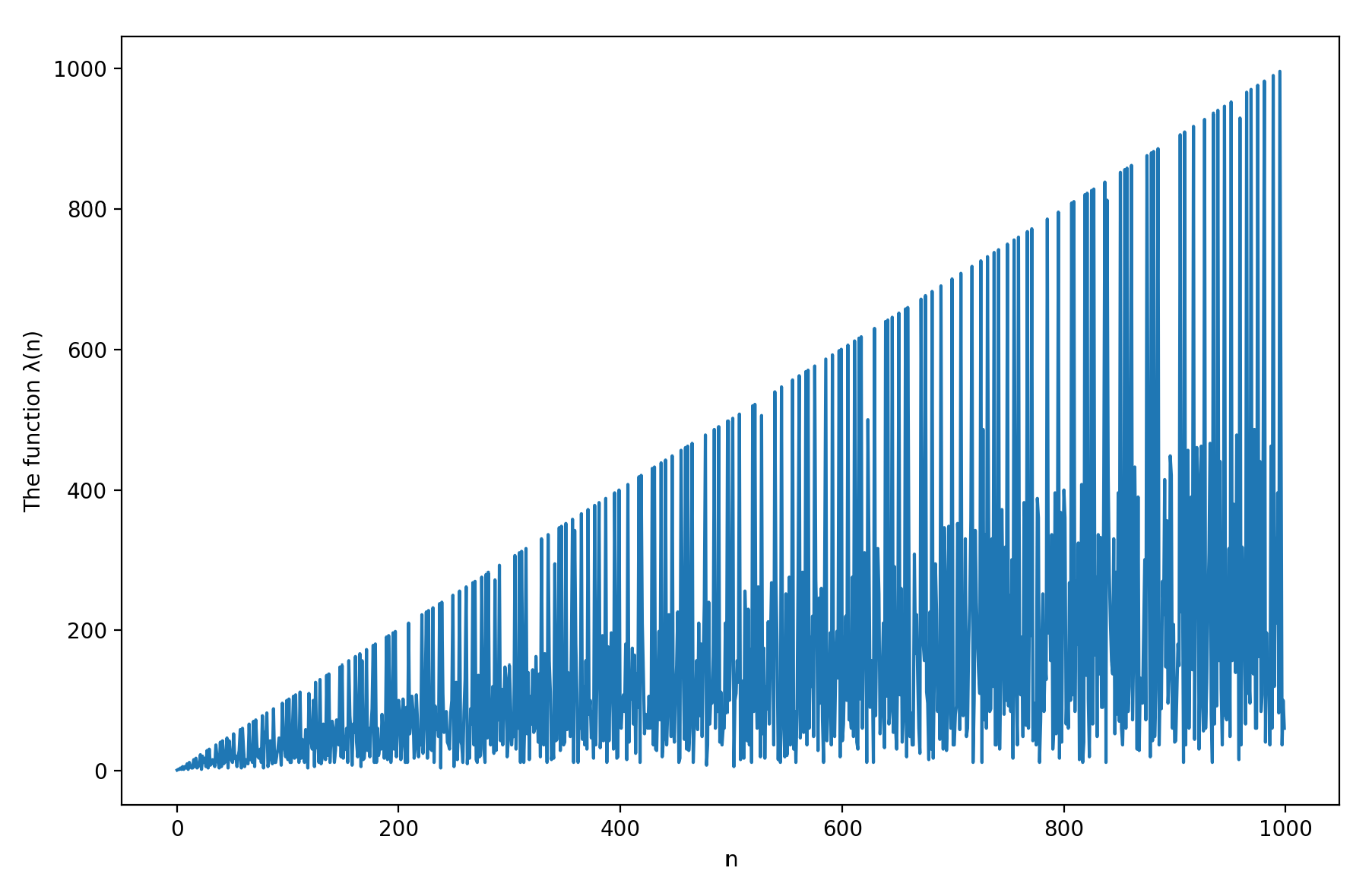
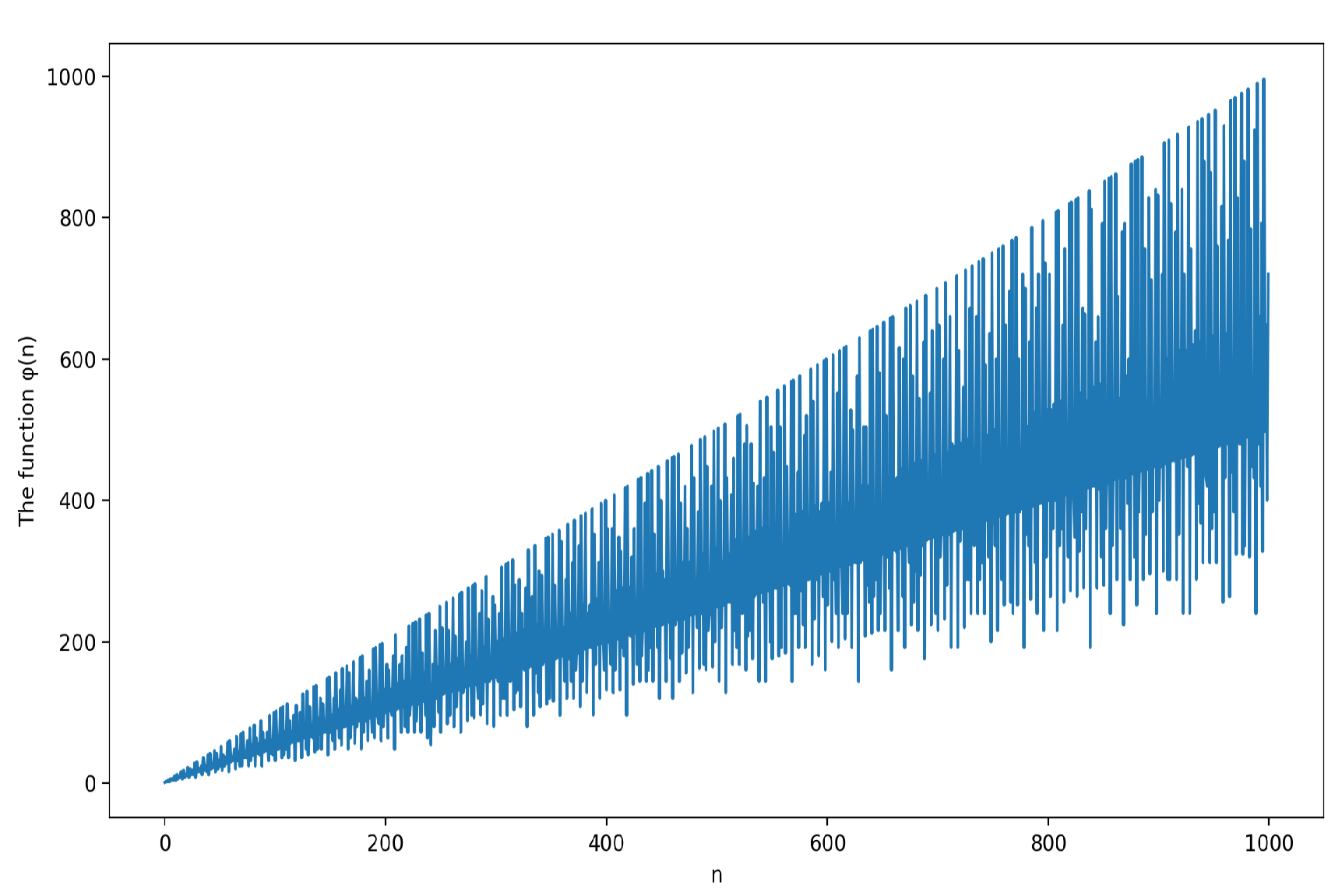

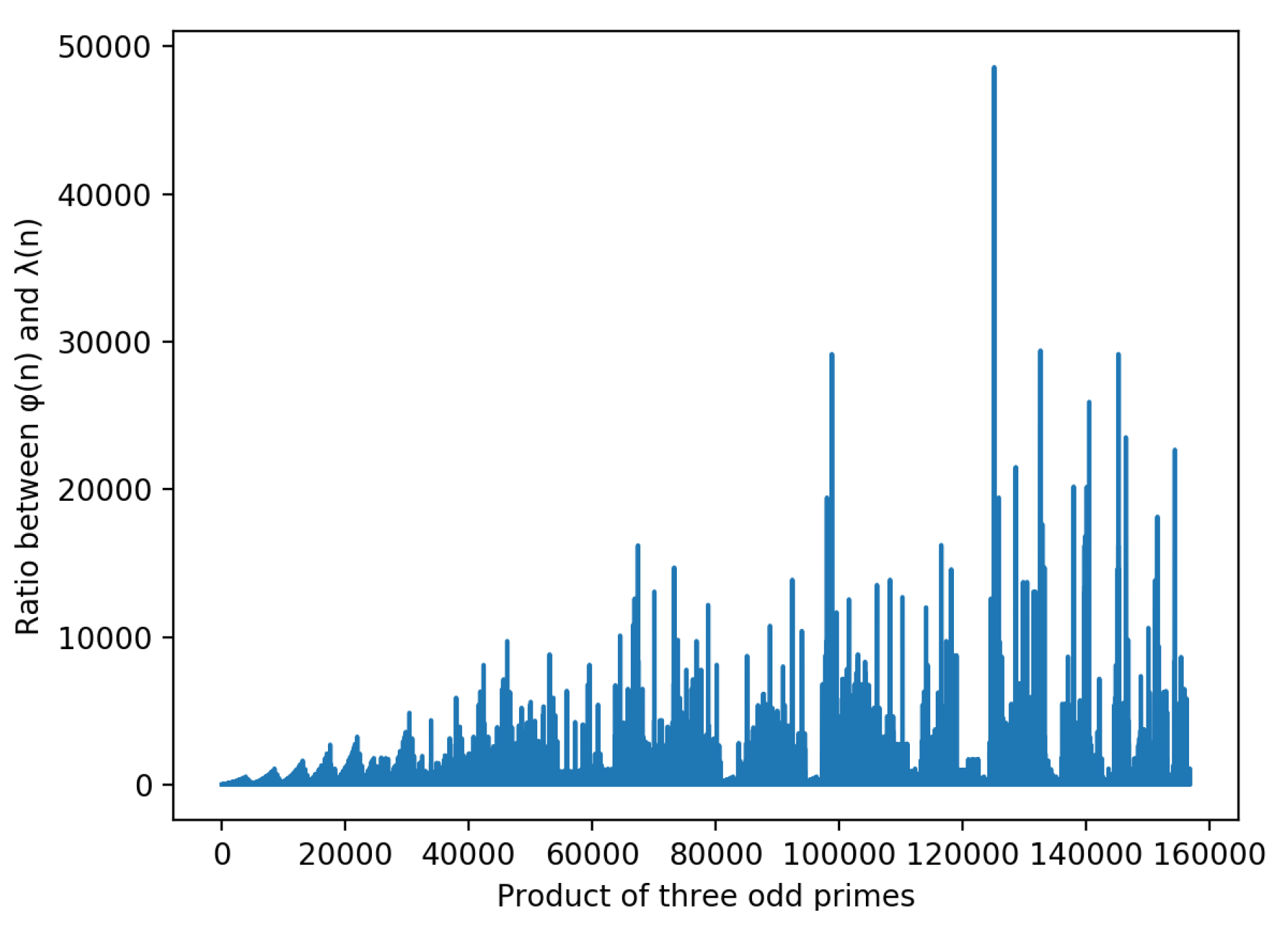
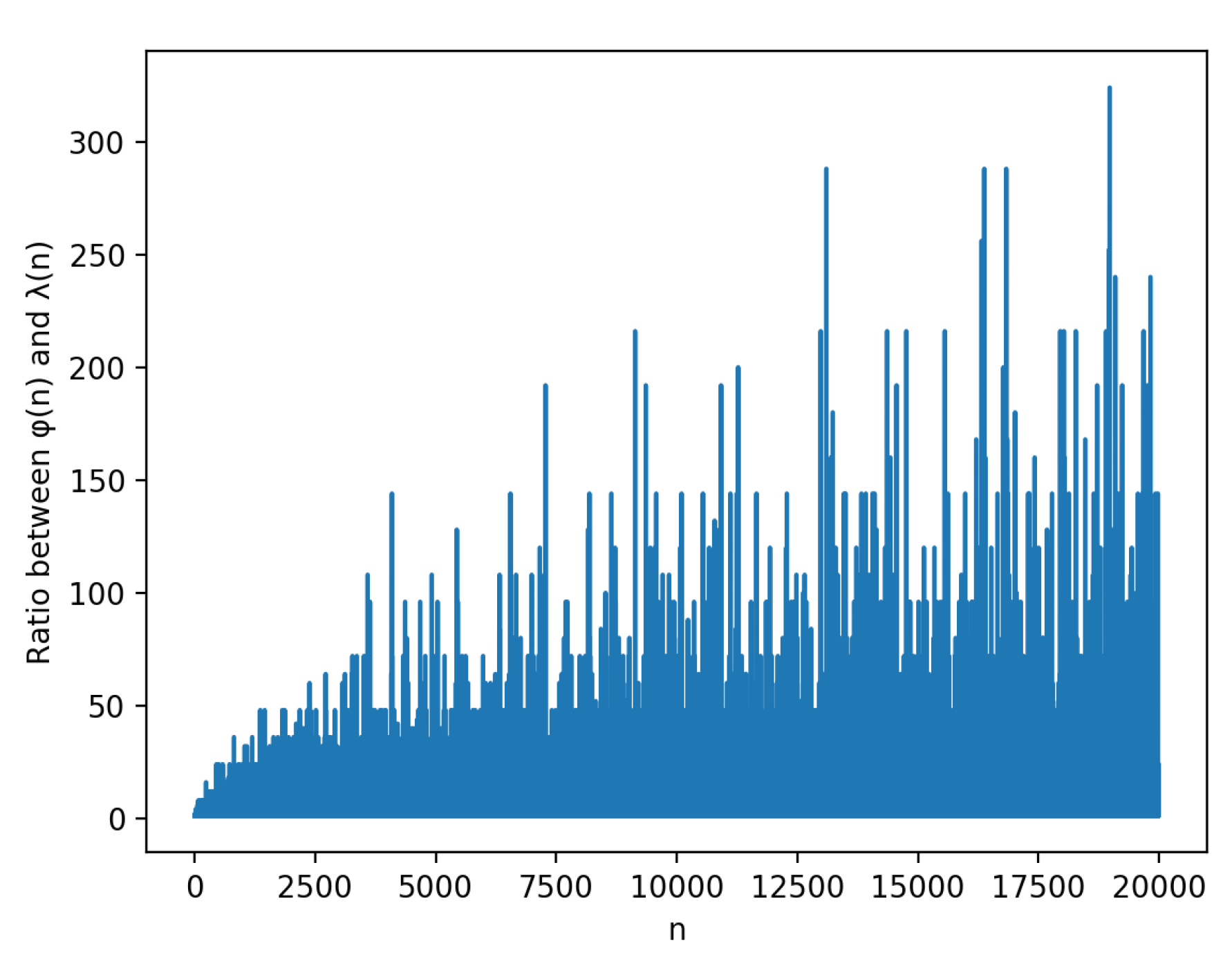
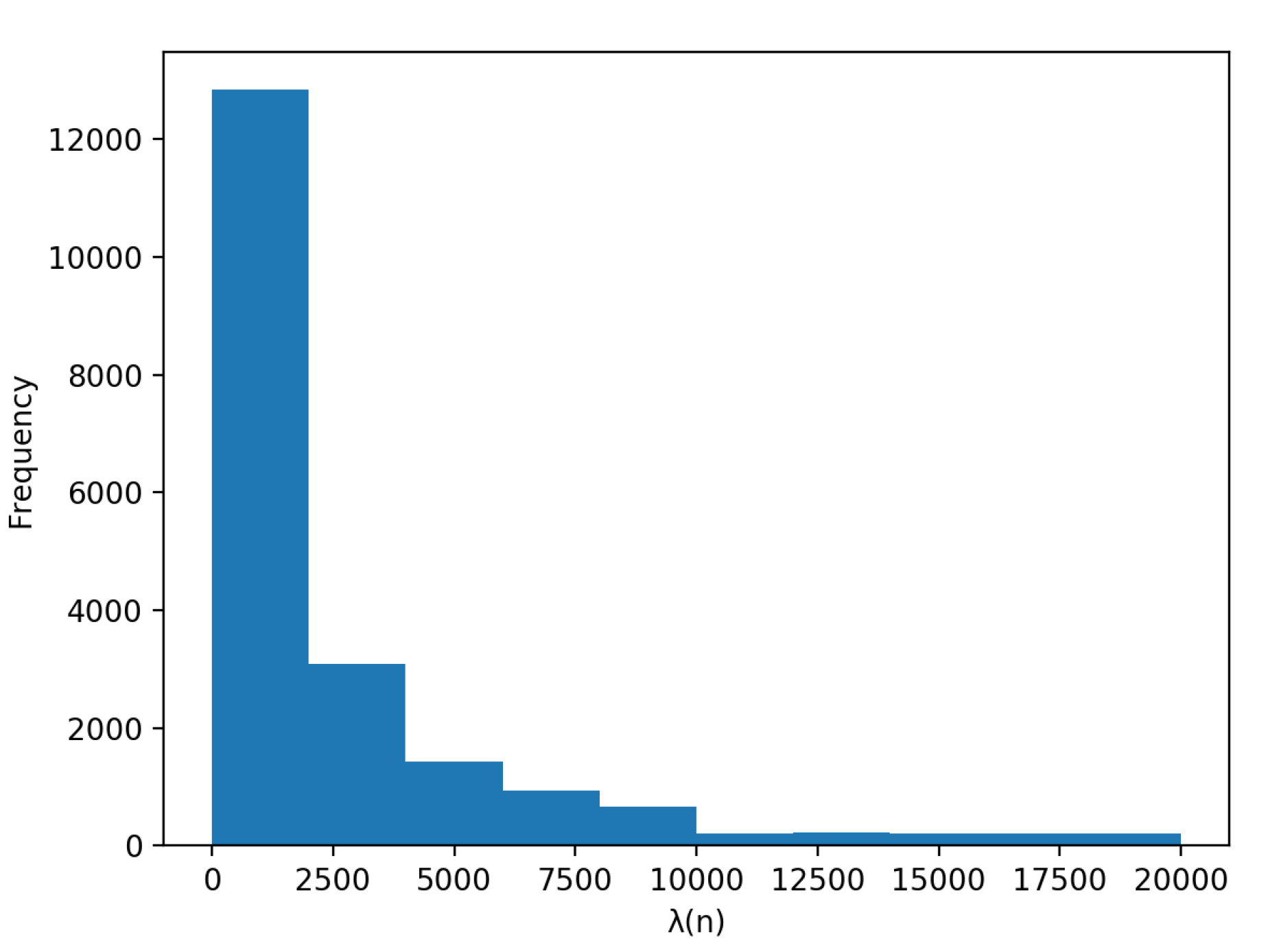

| n | ||||||||
|---|---|---|---|---|---|---|---|---|
| 4 | 12 | 28 | 60 | 30 | 96 | 72 | 216 | |
| 2 | 2 | 4 | 4 | 10 | 16 | 36 | 36 |
| n | ||||||
|---|---|---|---|---|---|---|
| 12 | 96 | 60 | 210 | 108 | 216 | |
| 4 | 48 | 180 | 100 | 216 | 1296 |
Publisher’s Note: MDPI stays neutral with regard to jurisdictional claims in published maps and institutional affiliations. |
© 2021 by the authors. Licensee MDPI, Basel, Switzerland. This article is an open access article distributed under the terms and conditions of the Creative Commons Attribution (CC BY) license (https://creativecommons.org/licenses/by/4.0/).
Share and Cite
Belhaouari, S.B.; Hamdi, Y.; Hamdi, A. Revisited Carmichael’s Reduced Totient Function. Mathematics 2021, 9, 1800. https://doi.org/10.3390/math9151800
Belhaouari SB, Hamdi Y, Hamdi A. Revisited Carmichael’s Reduced Totient Function. Mathematics. 2021; 9(15):1800. https://doi.org/10.3390/math9151800
Chicago/Turabian StyleBelhaouari, Samir Brahim, Yassine Hamdi, and Abdelouahed Hamdi. 2021. "Revisited Carmichael’s Reduced Totient Function" Mathematics 9, no. 15: 1800. https://doi.org/10.3390/math9151800
APA StyleBelhaouari, S. B., Hamdi, Y., & Hamdi, A. (2021). Revisited Carmichael’s Reduced Totient Function. Mathematics, 9(15), 1800. https://doi.org/10.3390/math9151800








